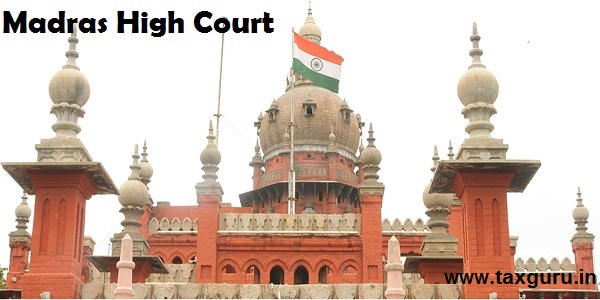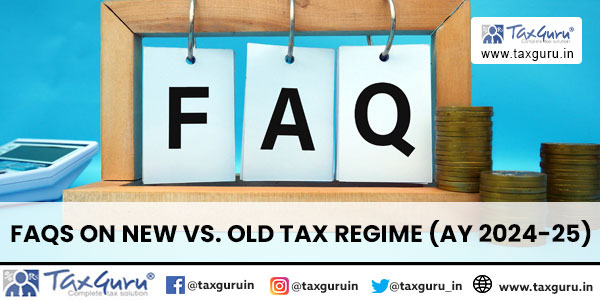Case Law Details
Bagadiya Brothers Private Limited Vs Commissioner of Customs (Port) (CESTAT Kolkata)
Introduction: The case of Bagadiya Brothers Private Limited vs. Commissioner of Customs (CESTAT Kolkata) revolves around the method used to calculate the duty payable on the export of iron ore fines. This article delves into the details of the case, including the background, arguments presented, and the final decision.
Background: The dispute in both appeals (C/75008/2021 and C/75450/2023) centers on a common issue. The Commissioner of Customs (Appeals), Kolkata, and Commissioner (Appeals), GST, CX, and Customs, Bhubaneswar, had upheld the Order of Finalization of Assessment, concerning the iron ore fines’ customs duty. The key points of contention were as follows:
1. The use of Load Port Test Report from Inspectorate Griffith India Pvt. Ltd., discarding the Custom House Laboratory (CHLR) Test Report for assessing impurities and, consequently, the customs duty.
2. Accepting the Transaction Value based on dry metric ton (DMT) price as per the contract.
3. Charging duty at a 30% advancement rate due to the Fe content determined on DMT basis, resulting in higher duty.
Analysis: The primary issue in these cases is whether the Fe (iron) percentage in iron ore fines should be determined on a Dry Metric Ton (DMT) basis or a Wet Metric Ton (WMT) basis for classification and rate of duty calculation. This matter was decisively settled by the Supreme Court in 1997 and was reinforced by CBEC Circular No. 4/2012-Cus.
- Fe content should be calculated on WMT basis, which accounts for impurities, including moisture, resulting in higher Fe percentages and subsequently lower duty rates.
- Various judicial pronouncements have affirmed this approach.
- The formula for calculating Fe content on WMT basis is: Iron content = Fe x (100-M) / 100 (on as received basis), where Fe is the iron content on a dry basis, and M is the moisture content in the sample.
- Recent changes effective from May 1, 2022, mandate Fe content calculations on a DMT basis, but this does not apply retroactively.
Conclusion: In light of the legal precedents and universally recognized practices, the appeals in question should be decided based on the Fe content calculated on a WMT basis. The assessing officers should deduct the moisture content from the Fe content as per NABL accredited government-approved Private Laboratory reports, and the assessments should be finalized accordingly. The impugned orders are set aside, and the appeals are allowed with any consequential relief as per the law. This case reinforces the importance of adhering to established customs procedures and legal principles in determining duty on iron ore fines.
FULL TEXT OF THE CESTAT KOLKATA ORDER
The issue in dispute in both the appeals is common. Hence, both the appeals are taken up together for hearing and disposal.
2. Appeal No.C/75008/2021 has been filed against Order-in-Appeal No. KOL/CUS(PORT)/AKR/582/2020 dated 17.09.2020 passed by the Commissioner of Customs (Appeals), Kolkata and Appeal No.C/75450/2023 has been filed against Order-in-Appeal No. 57- 58/CUS/CCP/2020 dated 31.12.2020 passed by Commissioner(Appeals), GST, CX and Customs, Bhubaneswar.
3. The facts of the case in brief are that the Commissioner of Customs (Appeals), Kolkata upheld the Order of Finalisation of Assessment of S/B No. 5114893 Dated 30.03.2017 by the Joint Commissioner of Customs(Export), Custom House, Kolkata, inter alia, on the following grounds :
i) Load Port Test Report issued by Inspectorate Griffith India Pvt. Ltd. was adopted, discarding Test Report of Custom House Laboratory (CHLR) on the ground that it does not show impurities percentage which is vital for assessment and that various appellate authorities have observed that testing by Customs House Laboratories is not as per mandatory BIS standard and that acceptance of Customs Lab Report may result in lower Customs Duty;
ii) For assessment , the Transaction Value on DMT price as per contract was accepted.
iii) Duty was charged @ 30% Adv, since the Fe content was more than 58% as per Load Port Test Report (LPTR), which was determined on dry Metric Ton basis and not on as received basis (WMT) resulting in levy of duty at higher rate .
4. In Appeal No.C/75450/2023, the Commissioner(Appeals), Bhubaneswar upheld the Order of Finalisation of Assessment of S/B No. 8825745 Dated 22.09.2017 & 8881700 dated 25.09.2017 by the Assistant Commissioner of Customs, Dhamra, inter alia, holding that – “the transaction value of the Iron Ore Fines had been rightly arrived at on DMT basis in terms of the contract, though the goods were presented for export in moist condition and therefore, for the purpose of classification to determine the rate of export duty, the Fe percentage has also to be arrived at on Dry Metric Ton (DMT) basis.
5. The ld. Consultant appearing on behalf of the appellants, submits that the two main ingredients of assessment of duty are determination of Transaction Value of the goods and determination of classification of the goods – which fixes the rate of duty. Both exporter and Department agreed on the ascertained Transaction Value calculated as per the Contract.
6. The ld. A.R. for the Revenue justified the impugned orders.
7. Heard both sides and perused the appeal records.
8. We find that the issue under dispute in these cases is whether for deciding the classification and rate of duty payable, the Fe %age of Iron Ore Fines is to be determined on Dry Metric Ton (DMT) basis or Wet Metric Ton (WMT) basis.
9. The issue stands decided as early as 1997 by Hon’ble Supreme Court in the case of Union of India Vs Gangadhar Narsingdas Aggarwal – 1997 (89) ELT 19(S.C.) and subsequent CBEC Circular No. 4/2012-Cus dated 17.12.2012 which was issued for adoption of uniform Customs procedure in all Customs Houses. In the said Circular, it was stipulated that for the purpose of charging of export duty the assessment of Iron ore, determination of Fe contents is required to be made on Wet Metric Ton (WMT) basis which in other words mean deducting the weight of all impurities (inclusive of moisture) out of the total weight/Gross Weight to arrive at Net Fe contents.
9.1 The rate of duty was being fixed, then and also now, on the basis of percentage of iron(Fe) in the ore. The higher is the percentage, more the rate of duty. In WMT the percentage of iron is taken from the material as it has been presented for exports, which contain all types of impurities – Moisture, Sulphur, Phosphorus, Aluminium trioxide etc. The percentage of impurities is substantial. If the percentage of Fe is taken after deducting all quantity of impurities, percentage of Fe will be lower.
Therefore, the rate of duty will be lower. The Supreme Court directed that “the percentage of Fe will be taken out of total material presented for export after deducting all the impurities including moisture.
1. This has been followed in the following judicial pronouncements :
i) SOCIEDADE DE FOMENTO INDUSTRIAL PVT. LTD.- 1987 (30) E.L.T. 686 (Goa High Court) [Para7] where similar view was taken as under :
“The iron contents in the moist iron ore which was exported ought to have been calculated following the well-recognised international practice and the duty calculated on basis of the said iron contents in the moist ore exported. By ignoring the moisture contents in the exported ore, the Customs Authorities arrived at a manifestly erroneous conclusion that cannot be sustained, as they were bound to consider; all the relevant circumstances ”.
ii) In the case of Mineral Enterprises Ltd. Vs CC Mangalore – 2010 (253) ELT 241 (Tri. – Bang.), the Tribunal has explained that the departmental chemist has reported the goods 64.6% on moisture free basis whereas the export was in moist condition. Report submitted by exporter stating Fe content as 63.00% is accepted. (No further Appeal)
iii) Similarly, while determining the rate of duty under Notification No. 62/2007-Cus Dt. 3.5.2007, the Tribunal in the case of CC (Port) Kolkata Vs Sesa Goa Ltd. – 2014 (310) ELT915 (Tri.-Kol.) has observed[ Para 5]
“On a plain reading of the said Notification, it is clear that the conditions, in which the goods are exported, become relevant in determining Fe content; for application of the said Notification”. (No further Appeal).
iv) The same issue was again agitated before the Tribunal. Hyderabad Bench in the case of General Nice Mineral Resources (I) P. Ltd. Versus C.C. Vijayawada- 2017 (352) E.L.T. 94 (Tri. – Hyd.). The court reiterated Para 3 of Board Circular No. 4/2012-Cus dated 17.2.2012 and held “…. for the purpose of charging of export duty the assessment of Iron ore for determination of Fe contents shall be made on Wet Metric Ton (WMT) basis which in other words mean deducting the weight of impurities (inclusive of moisture) out of the total weight/Gross Weight to arrive at Net Fe contents”[.emphasis added] (No Appeal)
v) This issue was also discussed and decided by the Tribunal in the case of Oblapuram Mining Company Pvt. Ltd. Vs CC Visakhapatnam – 2017-TIOL-1169 (CESTAT – Hyd.), where the party filed Appeals against two OIO and the department also filed Appeal against the same two OIOs. The Division Bench followed the Board’s Circular No. 4/2012 dated 17.12.2012 and the Supreme Court Judgments cited above dismissed the departments appeal.
vi) All these cases have attained finality.
9.2 While finalizing the assessment of subject S/B, the assessing officers have overlooked the most important aspect of assessment, namely, determination of Fe content for the purpose of classification/rate of duty applicable.
9.3 It would not be out of place to mention here that the ld. Commissioner of Customs, Mangalore in Para 22 of his Order-In-Original No.02/2010 under C. No. VIII/10/22/2009/Adjn dated 28.3.2010, has recorded as follows :
“22. To resolve the issue relating to the moisture content in the sample in lieu of the various judicial pronouncements and to retain the relevance of the test report given by the Chemical Examiner, Custom House, Cochin this office had earlier written to the Central Revenue Control Lab, New Delhi who has opined vide his letter dated 22.01.2009 that the iron content in samples in received basis can be calculated from iron content on dry basis if the moisture content in the samples as received basis is known:
Iron content = Fe x (100-M) / 100
(on as received basis)
Where Fe is % age of iron content on dry basis, M is moisture content in the sample.
This method although not the best, was temporarily adopted by the department in previous orders on similar matters so as to meet the requirements of various judicial pronouncements.”[we are attaching the order]
9.4 This method of determining Fe content in WMT is elaborately by discussed by Hon’ble High Court of Bombay in Para 47 of its judgement in WP No. 216/2022 in case of V M Salgaokar Brothers. The Court mentions that it is universally recognised and followed for determination of Iron content in natural iron fines.
9.5 If the above formula is applied, in both the above cases under appeal, the Fe content of Iron Ore Fines exported on WMT basis would be more than 55% but less than 58% and hence would fall under CTSH 2601 11 42 as per the Tariff structure of the relevant period and would attract Nil rate of duty in terms of Notification No.27/2011-Cus Dt.1-3-2011 (Sl.No.20A) as amended by Notification No.15/2016-Cus Dt.01.03.2016.
9.6 The Ld. Commissioner (Appeals) have only focussed on the valuation of the Iron Ore Fines, which is not in dispute. Here, classification of Iron Ore Fines exported and how the Fe %age is to be determined (as the classification is based on Fe content), is the question which the Commissioner (Appeals) have not addressed in their Orders. Therefore, the Orders in Appeal are not legal, proper and correct.
9.7 Meanwhile, with effect from 1.5.2022, by a Supplementary Note to Chapter 26, inserted in Indian Customs Tariff, it has been stipulated that in relation to the products under the heading 2601 the percentage of Fe (Iron) content wherever specified shall be calculated on dry metric ton basis.
9.8 It means that, only after 1.5.2022 for determination of Tariff heading the Fe content shall be calculated on DMT basis. And prior to 1.5.2022, the calculation of Fe content shall be on WMT basis.
9.9 The Hon’ble High Court of Bombay at Goa in their Order in Writ Petition No. 216/2022 dated 23.09.2022 in the case of VM Salgaokar & others vrs Asst Commissioner of Customs(Export), Goa & others have very elaborately dealt with this issue. The relevant portions are at Para 14 as under :-
“14. The petitioners have contended that the determination of Fe(iron) content on WMT basis was considered to be an acceptable norm in the prior assessments, which was clear from the fact that by virtue of the Finance Act 2022, for first time an amendment to the First Schedule to the Tariff Act, has been incorporated by adding a supplementary note in Chapter 26 to the effect that for the products of CTH 2601, the percentage of Fe (iron) content wherever specified, shall be calculated on the ‘Dry Metric Ton’ (DMT) basis to be effective from 01.05.2022. Hence, according to the petitioners there could not have been any adoption of the DMT method in respect of any assessment for the period prior to 1st May 2022.
63. In the light of the above discussion, Court ordered the petition is partly allowed in terms of the following directions :
“I. Insofar as the assessments in relation to the period prior to 1st May 2022 are concerned, they shall be governed by the principles of law in regard to the classification as laid down by the Supreme Court in Union of India vs. Gangadhar Narsingdas Aggarwal (supra), as clarified by the communication dated 17 February 2012, of the Tariff unit of the Ministry of Finance Department of Revenue (CBEC) Customs-IV Division.
II. The GA Circular No. 2/2019 dated 12/15 April 2019, being not issued under Section 151-A of the Customs Act, same cannot form the basis of any assessment.
III. In view of our above conclusion, we set aside the impugned orders-in-original dated 17 March 2022 and 13 March 2022 passed by the Assistant Commissioner of Customs.
IV. We order a remand of the matter in both the cases to the Assistant Commissioner of Customs, who shall hear the petitioners and pass a fresh order in accordance with law, in the light of the principles of laws as discussed by us in this judgement. Such exercise shall be undertaken within a period of three months from today.
64. Rules is made absolute in the above terms, No costs”.
Signed – BHARAT P. DESHPANDE, J. G.S. KULKARANI, J.”
9.10 The Assessing Officer for the impugned Shipping Bills have adopted the Test Report of Griffith India Pvt. Ltd. as it provides details of all types of impurities including moisture, even though they said report is arrived at on DMT basis.
10. In view of the above discussions, we pass the following orders :
i) direct the assessing officers to determine Fe content on WMT basis by deducting the moisture given in the test reports of NABL accredited government approved Private Laboratory ;
ii) convert the %age of Fe on DMT basis to %age of Fe on WMT basis by applying the universally recognised formula for determination of classification of IOF exported. The formula is :-
Iron content = Fe x (100-M) / 100
(on as received basis)
Where Fe is % age of iron content on dry basis, M is moisture content in the sample.
iii) finalise the assessments accordingly.
11. Accordingly, the impugned orders are set aside and the appeals are allowed with consequential relief, if any, as per law.
(Pronounced in the open court on 15.09.2023)

























